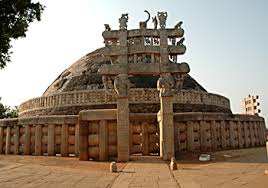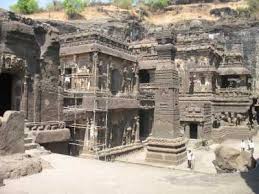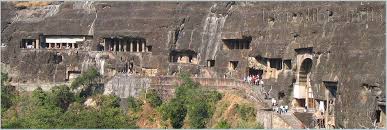Architecture in India has been influenced by varying cultures and it has constantly kept changing adapting, resisting and flourishing in accordance with the times. It prides itself of some of the marvellous wonders of the world, edifices which has withstood the vagaries of time and men, almost a veritable reflection of the nation, which has also stood tall through the ages.
 |
Remains of
Indus Valley Civilization |
The
Indus valley Civilisation ( 2600 to 1700 BCE ) was characterised by well-planned cities and houses, which would put any blue print of today's city plan to shame! The presence of drainage systems and public baths showed advanced standards of hygiene and sanitation and innovative planning. The cities had shops, workshops and even barracks. Amazing architecture existed during the
Vedic period (2000 - 600 BCE) too,
 |
| Sanchi Stupa |
followed by
Mauryan Era ( 321–184 BCE). Architecture during Mauryan Era was characterised by extensive usage of wood, pillars, decorative walls;
stupa ( raised structure) formed an important part of this Era. The Sanchi Stupa is one of the many Stupas which is a good example. This was followed by the Satvahanas Period when several Buddhist Stupas,
 |
| Ajanta Ellora |
Chaityas (Buddhist Shrines) and
Viharas (Buddhist monastries) were built. The Karla Caves in Pune and The Stupa at Amaravati, the Ajanta and Ellora Caves near Aurangabad are sites which are thronged by people from all over, to marvel at the monumental splendour, even today.
 |
| Ajanta Ellora Caves |
The
Gupta period ( 280 - 550 CE ) features large stone figures, large and small bronzes scultpured in the refined Gupta style. The world renowned Nalanda University was constructed around this period, though it had its decline with the growing ire and jealousy from other religious factions. All that remains now are the ruins, which stand in muted silence, spealing of what could have been.
No comments:
Post a Comment